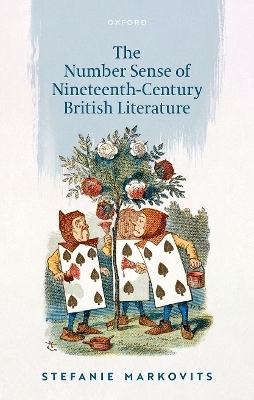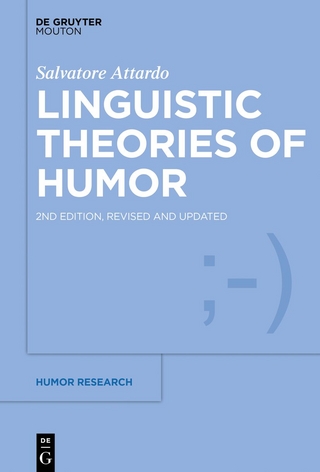
The Number Sense of Nineteenth-Century British Literature
Seiten
2025
Oxford University Press (Verlag)
978-0-19-893779-1 (ISBN)
Oxford University Press (Verlag)
978-0-19-893779-1 (ISBN)
- Noch nicht erschienen (ca. Februar 2025)
- Versandkostenfrei innerhalb Deutschlands
- Auch auf Rechnung
- Verfügbarkeit in der Filiale vor Ort prüfen
- Artikel merken
Explores the way that numbers interact with literary forms in the nineteenth century. The close literary readings ask why some writers engage particularly with numbers; what kinds of work numbers perform for writers and readers when they are encountered within a text; and how numbers relate to the formal elements of poetry and fiction.
The Number Sense of Nineteenth-Century British Literature considers how the avalanche of printed numbers characterizing the period affected its literature. It looks at the influence of a variety of cultural and historical movements, such as the rise of statistics and of democratic Liberalism and concurrent developments in mathematics. This book takes as its starting point and focus the presence of actual numbers--ordinal and cardinal, Arabic, Roman, and spelled out in words--within the century's literary texts. It is through the deployment of such figures that texts display their number sense; similarly, readers develop the faculty of number sense by paying careful attention to their presence. And contemplation of a text's use of numbers, while frequently pointing to specific historical contexts, also enables more fundamental recognitions about how literature makes meaning.
The Number Sense asks what kinds of work, intellectual and ethical, literature's numerical figures perform. Why are some writers especially prone to include numbers? What affordances do they wield in various literary environments and against the backdrop of the numbery nineteenth century? When do textual numbers really count and when do they ask us to keep count? How do they stage contests between the one and the many, individuals and collectives? How do they relate to formal aspects of works, like plot and character, narrative, and lyric Lingering over literary measures illuminates the way numbers help shape texts into the recognizable forms we call genres. To that end, the book considers the works of poets, like Tennyson, Wordsworth, and Byron, and of novelists working in a broad range of genres, including Jane Austen, George Gissing, Charles Dickens, Anthony Trollope, Lewis Carroll, Bram Stoker, Wilkie Collins, and Thomas Hardy. The numbers embedded in their fictions and verse can serve both as valves, releasing cultural pressures, and as fulcrums, places where pressures coincide to create new forms of literary agency.
The Number Sense of Nineteenth-Century British Literature considers how the avalanche of printed numbers characterizing the period affected its literature. It looks at the influence of a variety of cultural and historical movements, such as the rise of statistics and of democratic Liberalism and concurrent developments in mathematics. This book takes as its starting point and focus the presence of actual numbers--ordinal and cardinal, Arabic, Roman, and spelled out in words--within the century's literary texts. It is through the deployment of such figures that texts display their number sense; similarly, readers develop the faculty of number sense by paying careful attention to their presence. And contemplation of a text's use of numbers, while frequently pointing to specific historical contexts, also enables more fundamental recognitions about how literature makes meaning.
The Number Sense asks what kinds of work, intellectual and ethical, literature's numerical figures perform. Why are some writers especially prone to include numbers? What affordances do they wield in various literary environments and against the backdrop of the numbery nineteenth century? When do textual numbers really count and when do they ask us to keep count? How do they stage contests between the one and the many, individuals and collectives? How do they relate to formal aspects of works, like plot and character, narrative, and lyric Lingering over literary measures illuminates the way numbers help shape texts into the recognizable forms we call genres. To that end, the book considers the works of poets, like Tennyson, Wordsworth, and Byron, and of novelists working in a broad range of genres, including Jane Austen, George Gissing, Charles Dickens, Anthony Trollope, Lewis Carroll, Bram Stoker, Wilkie Collins, and Thomas Hardy. The numbers embedded in their fictions and verse can serve both as valves, releasing cultural pressures, and as fulcrums, places where pressures coincide to create new forms of literary agency.
Stefanie Markovits is a Professor of English and the Director of Undergraduate Studies for English at Yale University. She studies and teaches British literature of the long nineteenth century: Romantic and Victorian, poetry and the novel. Professor Markovits is the author of three previous books: The Crisis of Action in Nineteenth-Century English Literature (Ohio State UP, 2006), The Crimean War in the British Imagination (Cambridge UP, 2009), and The Victorian Verse Novel: Aspiring to Life (Oxford UP, 2017).
Introduction
Part I.
1: Byron's Counts
2: Jane Austen, by Half
Part II.
3: Figuring Character in Dickens
4: Plotting Age in Trollope
Conclusion
| Erscheint lt. Verlag | 6.2.2025 |
|---|---|
| Verlagsort | Oxford |
| Sprache | englisch |
| Maße | 138 x 216 mm |
| Themenwelt | Geisteswissenschaften ► Sprach- / Literaturwissenschaft ► Anglistik / Amerikanistik |
| Geisteswissenschaften ► Sprach- / Literaturwissenschaft ► Literaturgeschichte | |
| Geisteswissenschaften ► Sprach- / Literaturwissenschaft ► Literaturwissenschaft | |
| ISBN-10 | 0-19-893779-2 / 0198937792 |
| ISBN-13 | 978-0-19-893779-1 / 9780198937791 |
| Zustand | Neuware |
| Informationen gemäß Produktsicherheitsverordnung (GPSR) | |
| Haben Sie eine Frage zum Produkt? |
Mehr entdecken
aus dem Bereich
aus dem Bereich
Poetik eines sozialen Urteils
Buch | Hardcover (2023)
De Gruyter (Verlag)
59,95 €
Buch | Softcover (2024)
belleville (Verlag)
20,00 €


